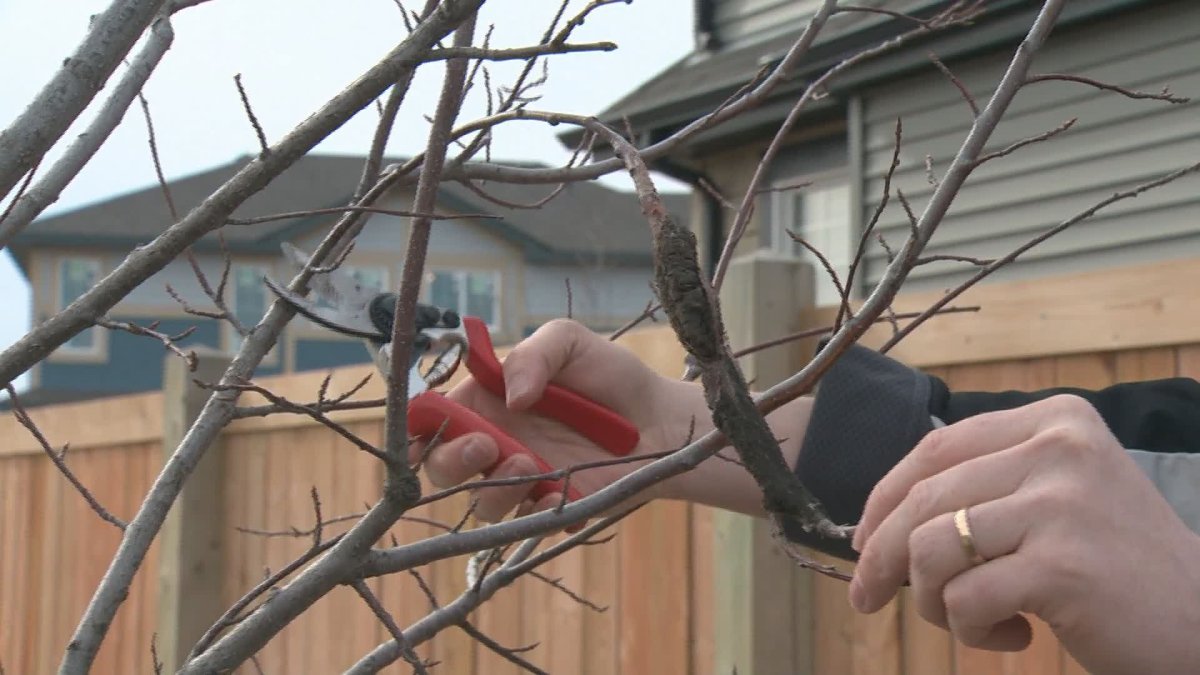A fungal infection spreading throughout trees in Edmonton has the city hard at work trying to minimize the problem, but getting to the root of this issue isn’t so cut and dried.

“They’re kind of an eye sore,” resident Panas Ilenko said.
“It’s looking very ugly,” resident Sadar Khan said.
It’s called black knot: a fungal infection that impacts plum, apricot and cherry trees. It’s most aggressive on Maydays and Schubert Chokecherries.
READ MORE: Dead Chokecherry trees like ‘something out of a horror movie’
While some Edmontonians don’t like the way they look, there are other underlying issues.
“It’s actually highly infectious so you actually see it quite a bit in our neighbourhoods,” said Perry Stothart, operations manager for Classic Landscaping.
The fungus disfigures branches and if untreated can eventually kill trees.
To mitigate the spread, city arborists have been hard at work. So far, 2,600 trees that have black knot or that are susceptible to black knot have been pruned and 390 infected trees have been removed.
The city said it will continue to work in infected areas but encourages residents to monitor and treat trees on their property.
“The best way and only way is to prune it out. It’s important to prune it six to eight inches from the point of infection,” Stothart said.
Stothart said it’s also essential to disinfect your tools when pruning.
“Make sure you burn or bag your pruning. Don’t throw them in your compost pile because it can re-infect the tree if you just leave it in a pile in the yard,” Stothart said.
READ MORE: Gnarly fungus taking over Edmonton’s ornamental tree population
Residents who have dealt with this problem on their own property said it’s sad to see how it’s impacted the broader community.
“We live here because of the trees and we walk and we enjoy them, so having them removed because of that, it’s annoying,” said resident Bob Schroffel, who has been pruning infected trees in his yard for years.
Stothart said if you do spot the knot and are looking to trim your own trees, there are a few safety measures to consider.
“The really key point about pruning is that anyone can do it if you can keep your feet on the ground. If it’s a large tree you’re going to want to look at profession help. You want to make sure you stay safe while pruning in your yard,” he said.
The city encourages residents to prune out the infected branches between late fall and early spring when plants are dormant and the knots are easier to see.



Comments